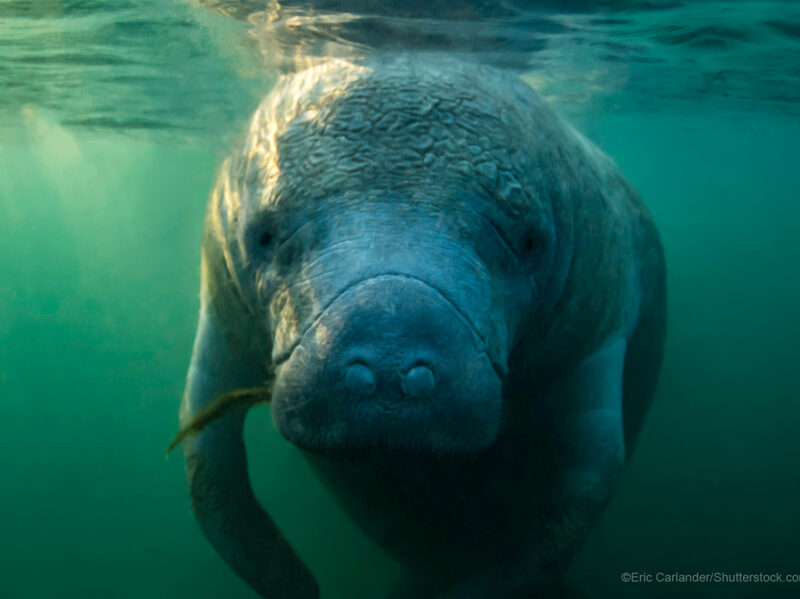West Indian Manatee (American Manatee)
Species Data
Class: Mammalia
Order: Sirenia
Family: Trichechidae
Scientific Name: Trichechus manatus
IUCN Red List status: Vulnerable
Description
The West Indian Manatee, also known as the American Manatee, is one of three manatee species, the other two being Amazonian Manatee (T. inunguis) and West African Manatee (T. senegalensis). Manatees (often referred to as sea cows) are large, streamlined animals with round, barrel-shaped bodies and small heads; they can weigh up to half a ton and live more than fifty years. They have paddle shaped front flippers, a powerful tail and a large downward-pointing muzzle. West Indian Manatees are covered in hairs called vibrissae which helps them pick up vibrations in the water.
Behaviour
Manatees are completely aquatic and mainly herbivorous. Females are usually solitary but will form groups in areas rich in food and during the mating season.
They breed between the ages of 7 and 9, occasionally as early as 4 years of age. Gestation is 12 to 14 months; they usually give birth to a single young but twins have been recorded. Young manatees are born with molars and premolars, allowing them to consume sea grass within the first three weeks of birth. Manatees are active at any time but spend around half of the day sleeping and most of their waking hours grazing on a wide variety of freshwater, marine and shoreline plants. They are able to stay submerged for up to 20 minutes, but usually come to the surface to breathe every three to five minutes.


Habitat
The West Indian Manatee occurs across Central and South America, inland as far as the Magdalena river valley in Colombia. They favour freshwater environments, but are also found in brackish (a mix of fresh and salt water) and saltwater systems. Preferred habitats are shallow, slow-moving waters of inland waters and areas near the shore with dense underwater vegetation.
Threats and Conservation
The West Indian Manatee has been hunted for hundreds of years for meat and hide, and continues to be hunted to this day in Central and South America. Illegal poaching, as well as collisions with speeding motorboats and getting caught up in fishing gear, are a constant source of manatee fatalities. Due to their low reproductive rates, a decline in manatee population may be hard to overcome.
